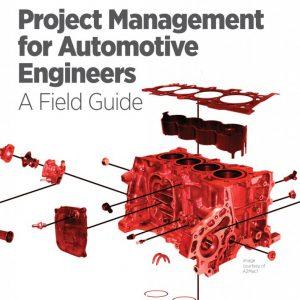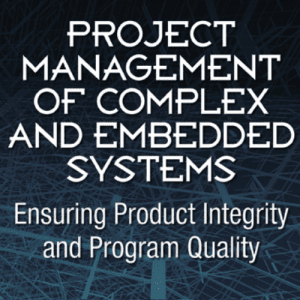Software-Defined Vehicles
The Rise of Software-Defined Vehicles
The automotive industry is transforming, with Software-Defined Vehicles (SDVs) driving this new era of mobility. SDVs represent a shift from hardware-centric vehicles to vehicles where software plays a central role in controlling everything from navigation and entertainment to critical safety systems. This is not just a buzzword thing, but neither is it business as usual. This shift introduces exciting opportunities and unique development, manufacturing, and quality control challenges. This is new, but plenty of things apply to the new structure of vehicles. Software on vehicles is not a new thing. The amount of software and communications channels has exploded.
In this post, we’ll explore the needs for configuration management, innovative testing approaches, Agile project management, and how cutting-edge technologies like AI, VR, and AR are advancing vehicle development.
Why Configuration Management is Critical for SDVs
Managing the complexity of software in modern vehicles requires robust configuration management. As vehicles evolve and new software updates are released, managing various software versions, configurations, and compatibility issues across the vehicle’s lifecycle is crucial. Project management and product development should emphasize the importance of rigorous configuration management, ensuring that updates are applied correctly to maintain vehicle functionality and safety.
In Software-Defined Vehicles, the software lifecycle is just as important as the hardware lifecycle, making configuration management essential to prevent errors and maintain high safety standards. Configuration management of the software updates and changes to subsystems, as the vehicle matures, will all require the level of coordination once attributed to the hardware. The ease of software updates attributed to download over the air via telematics systems makes attention to configuration management all the more critical. Vehicle manufacturers must take a firm hand and move toward a higher degree of verticle integration.
Automotive Vertical Integration refers to the process by which automotive manufacturers take control of multiple supply chain stages, from raw materials to final assembly and even post-sale services. Traditionally, automakers have relied on a network of suppliers for various components, but with vertical integration, companies bring more of these processes in-house. This approach allows manufacturers to streamline production, reduce costs, and improve quality control by overseeing every step of the development and manufacturing process. In modern challenges, such as supply chain disruptions or the shift towards electric and software-defined vehicles, vertical integration is becoming increasingly crucial for companies seeking to maintain competitive advantages and ensure that they can quickly adapt to new technologies and market demands. Tesla’s approach to building batteries, software, and even certain vehicle components in-house is a leading example of vertical integration in the automotive industry today.
Testing Approaches for Software-Defined Vehicles
Testing these complex vehicle software systems requires a multifaceted approach. Traditional testing methods are no longer sufficient. Instead, SDVs require advanced methods like model-in-the-loop (MiL), software-in-the-loop (SiL), and hardware-in-the-loop (HiL) testing to validate software across various scenarios before it ever reaches the road. The same testing strategies we need for managing and testing the hardware also apply to the software; however, now we likely have more variations; things that were once only hardware are now a collection of hardware and additional software.
Insights into automated testing and continuous integration allow for the quick identification and resolution of software and systems issues. This approach ensures that the software in SDVs functions reliably under different driving conditions, delivering the safety and performance that consumers expect. A prioritization schema for what to test and how to do it, beginning with models and simulations. Models and simulations require some real-world vetting to understand the nature of the environment, for example, how parameters and variables interact.

Software defined vehicles will still benefit from testing techniques of the embedded software and subsequent system,
Agile vs. Conventional Project Management for SDVs
Developing Software-Defined Vehicles demands flexibility and adaptability—qualities ideally suited to Agile project management. Agile methodologies, which focus on iterative development and continuous improvement, allow teams to adjust quickly to technological changes and evolving customer needs.
Using Agile principles in SDV development, particularly for managing the rapid iterations of software updates. While conventional project management still has its place in long-term planning for hardware development, Agile allows teams to be more responsive, especially when working on the software components of Software-Defined Vehicles.
The Role of AI, VR, and AR in SDV Technology and Manufacturing Maturity
Emerging technologies like Artificial Intelligence (AI), Virtual Reality (VR), and Augmented Reality (AR) are significantly impacting the design, testing, and manufacturing of Software-Defined Vehicles. These tools enable engineers and developers to visualize complex systems, simulate real-world scenarios, and identify potential issues before they become costly problems.
AI enhances decision-making by offering predictive analytics, allowing manufacturers to identify potential software bugs or hardware malfunctions before they occur. At the same time, VR and AR enable virtual testing environments where engineers can design, assemble, and test components without needing physical prototypes, reducing costs and speeding up time-to-market.
Conclusion: Embracing the Future of Software-Defined Vehicles
The future of mobility lies in Software-Defined Vehicles, where software, not hardware, controls and enhances the driving experience. The automotive industry is transforming from configuration and Agile project management to cutting-edge testing approaches and AI, VR, and AR integration. Creation is essential, and controlling that creation through repeatable processes ensures that SDVs are innovative, safe, and reliable. As the automotive world continues to embrace these changes, it’s clear that Software-Defined Vehicles will define the next generation of transportation.
These vehicles will be best served not only by embracing technology but also by a level of organization maturity espoused, for example, in Capability Maturity Model® Integration we can no longer rely heavily on ad hoc approaches. Certain fundamentals in product development will enable success. We should not think we have remote software downloaded via telematic systems as a metaphorical “get out of jail free card.” This does not give us a license to deliver poor-quality products that can get people injured.
For more information, contact us
Follow us on social media at:
Amazon Author Central https://www.amazon.com/-/e/B002A56N5E
LinkedIn: https://www.linkedin.com/in/jonmquigley/






